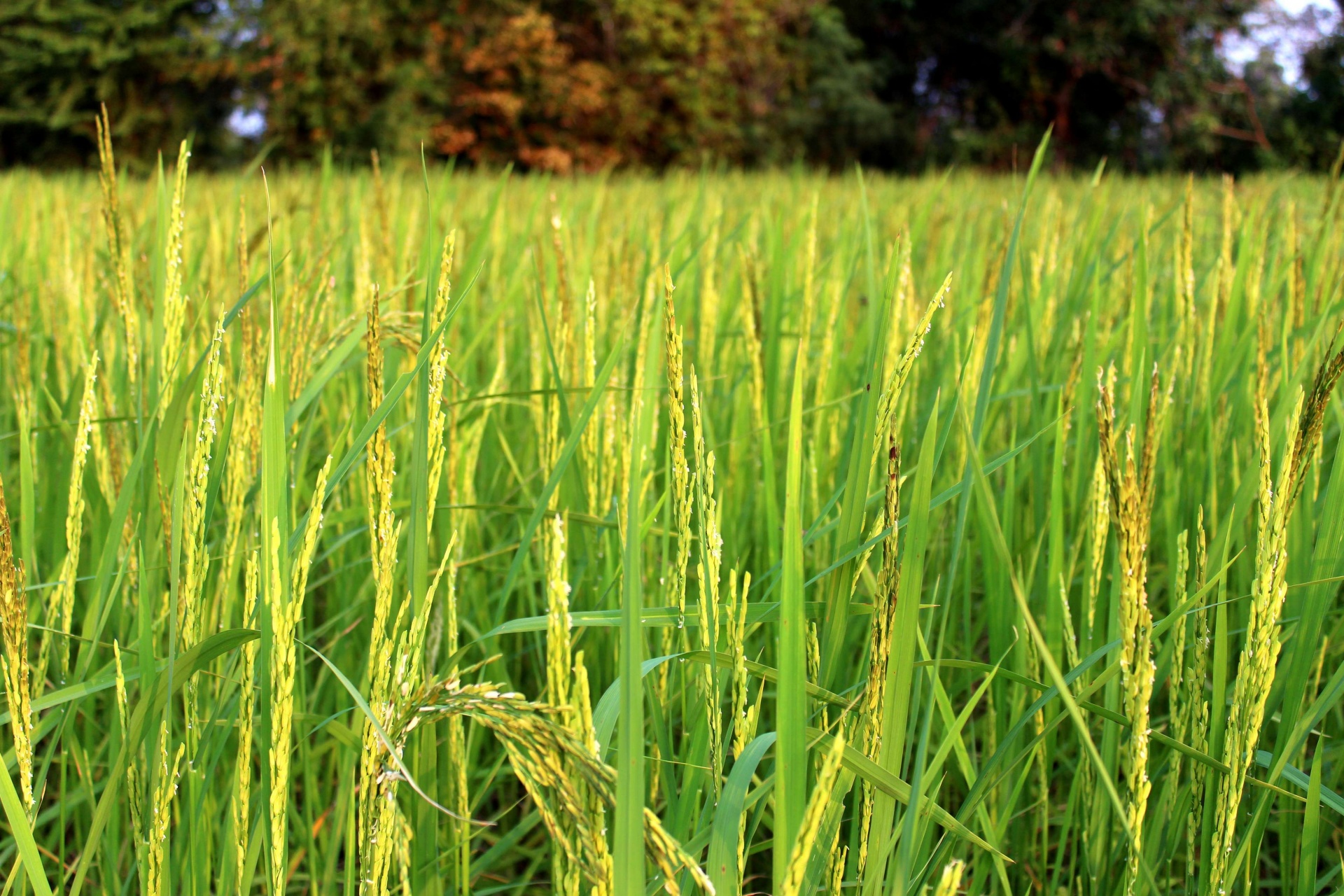
Rice
Oryza sativa
Basic Information
🌿 Family: Poaceae🗺️ Zone: 9-11
Other Names:
- Asian rice
🌡️ Ideal Temperature : 70°F – 95°F
🔥 Heat Tolerance: Up to 104°F
❄️ Cold Tolerance: Down to 50°F
🌱 Type: Annual
Layers
- Herbaceous
Functions
- Edible
- Wildlife Attractor
- Mulcher
- Erosion Control
- Animal Fodder
- Water Purifier
- Ground Cover
Pests
No pests associated with this plant.
Companions
- Azolla
- Fish
- Duck
Plants to Avoid
- None
Description
Rice (Oryza sativa) is an annual grass species widely cultivated for its edible grains. The plant typically grows to heights between 1 and 2 meters, featuring erect stems with smooth surfaces and long, lanceolate leaves. The inflorescence is a terminal panicle bearing numerous small spikelets, each containing a single floret. The fruit is a caryopsis, commonly known as a rice grain.
🌞💧 Sun and Water Requirements:
Rice thrives in full sun and requires abundant water, often grown in flooded fields known as paddies. Consistent moisture is crucial throughout its growth cycle.
✂️🫘 Methods to Propagate:
Propagation is primarily through direct sowing of seeds or transplanting seedlings. Seeds are sown in nurseries and later transplanted to paddies.
🧑🌾👩🌾 When to Harvest:
Harvest occurs when grains turn golden brown and reach full maturity, typically 3 to 6 months after planting, depending on the variety.
Purpose
- **Edible**: Rice grains are a staple food for over half of the world's population, providing essential carbohydrates and nutrients.
- **Wildlife Attractor**: Rice fields offer habitats for various aquatic organisms, birds, and beneficial insects, enhancing biodiversity.
- **Mulcher**: Post-harvest rice straw can be used as mulch to suppress weeds, retain soil moisture, and improve soil health.
- **Erosion Control**: Dense planting in paddies helps stabilize soil and prevent erosion, especially in flood-prone areas.
- **Animal Fodder**: Rice bran and straw serve as feed for livestock, offering a valuable resource in integrated farming systems.
- **Water Purifier**: Rice paddies can act as natural filters, improving water quality by trapping sediments and absorbing nutrients.
- **Ground Cover**: The extensive root system and canopy cover help protect soil from direct sunlight and reduce evaporation.